How to Raise Chickens for Farm-Fresh Eggs
From choosing breeds and caring for chicks to tricking out a coop – here’s what you need to get crackin’.
It started innocently enough. In the spring of 2010, shortly after Duluth, Minnesota, passed an ordinance allowing residents to keep chickens, my husband, Jason, came home from the feed store bearing a couple of baby buff Orpingtons and three Rhode Island Reds.
We set the chicks up in a kiddie pool in the garage, eventually moving them to a coop Jason cobbled together from sheets of corrugated metal. The birds came when called and seemed to enjoy being petted by our two young children. And the eggs! Who knew that a backyard diet of grass and bugs, supplemented with quality chicken feed, could result in eggs with such bright flavors, robust yolks that stand up tall when fried, and whites that whisk into gorgeous meringues?
Watching our happy hens scratch the earth, Jason felt a sense of accomplishment he’d never experienced in his day job as a grant writer. So when he was laid off that summer, and learned that no area stores carried pasture-raised eggs, my husband got to scheming. We spent the next few months attending conferences and classes for beginning farmers, consulting state agencies about regulations, and finding the perfect 10-acre parcel for rent 35 miles outside of town. In June, we took delivery of 900 pullets (young chickens on the verge of laying eggs) and housed them in a series of DIY hoop coops. Locally Laid, our pasture-raised egg company, was born.

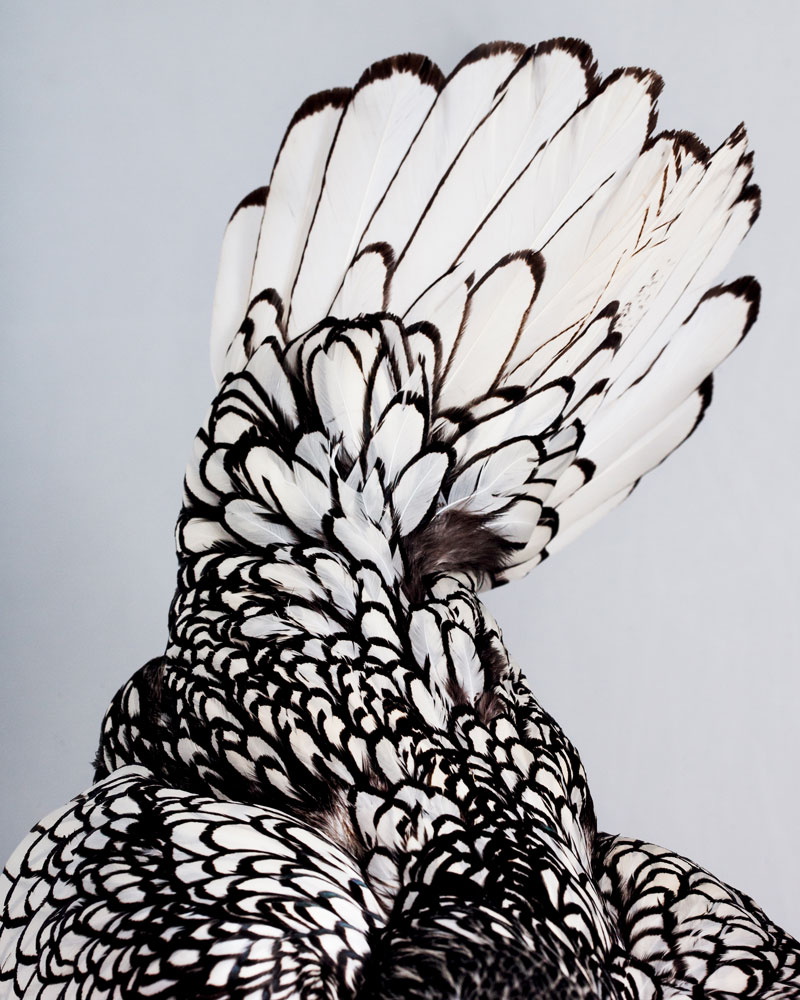
Jason and I may have gone a tad farther than most, but we’re certainly not the only folks aboard the chicken bandwagon. Chicken-sitting services have popped up in places like Seattle, Los Angeles, and Portland, Oregon. It’s hard to find a major metropolitan area these days that doesn’t host at least one chicken-coop tour. In fact, the American Poultry Association reports that its membership has doubled since 2006. Pet-like and productive, these birds offer more than mere companionship or even a steady supply of eggs. The determined foragers also cut down on pests while providing garden-enhancing manure. Is it any wonder this “gateway livestock” draws more and more curious hobbyists into a farm-centric way of life?
Getting started
Before dashing out to buy a few, or several hundred, chicks, you’ll first need to determine how many your local zoning regulations permit and how many your property can accommodate, given a ratio of roughly one bird per 10square feet of pasture. Assuming eggs are the end goal (“broilers,” or meat birds, are a whole different enterprise, and not the focus of this story), you’ll want to weigh matters of quality and quantity: Are you after large eggs, or a large number of eggs, or particularly beautiful green and blue eggs? Other attributes to consider when choosing breeds include cold- and heat-tolerance, temperament, and plain old good looks. If size matters, you should know that most breeds come in small bantam forms that weigh about 75 percent less than standard birds. Be forewarned, though, that while no chicken qualifies as a skilled flier, bantams are better at it than full-size fowl. (See “Fine-Feathered Friends,” below.)
You can jump-start the process, as Jason and I did for our commercial venture, by ordering ready-to-lay pullets, but you’ll miss out on the experience of bonding with baby chicks. You can also snatch up whatever young birds happen to be at your local farm-supply store, as we did during our initial descent into chicken madness – you’ll know you’re getting chickens suited to your region. For a wide variety of breeds, however, order from a reputable online hatchery such as Iowa’s Murray McMurray, Ohio’s Meyer, or Texas’s Ideal Poultry. (Bonus: Any company that ships across state lines must maintain fully vaccinated breeding stock, monitored for disease by the National Poultry Improvement Plan, a program created in the 1930s.)
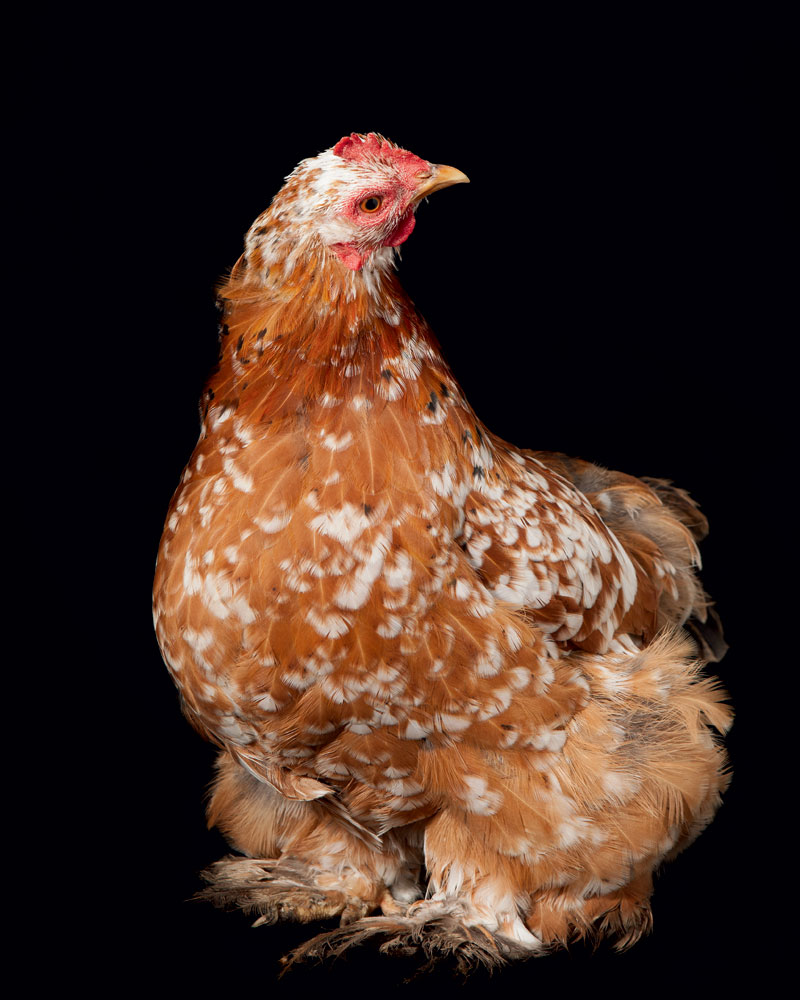

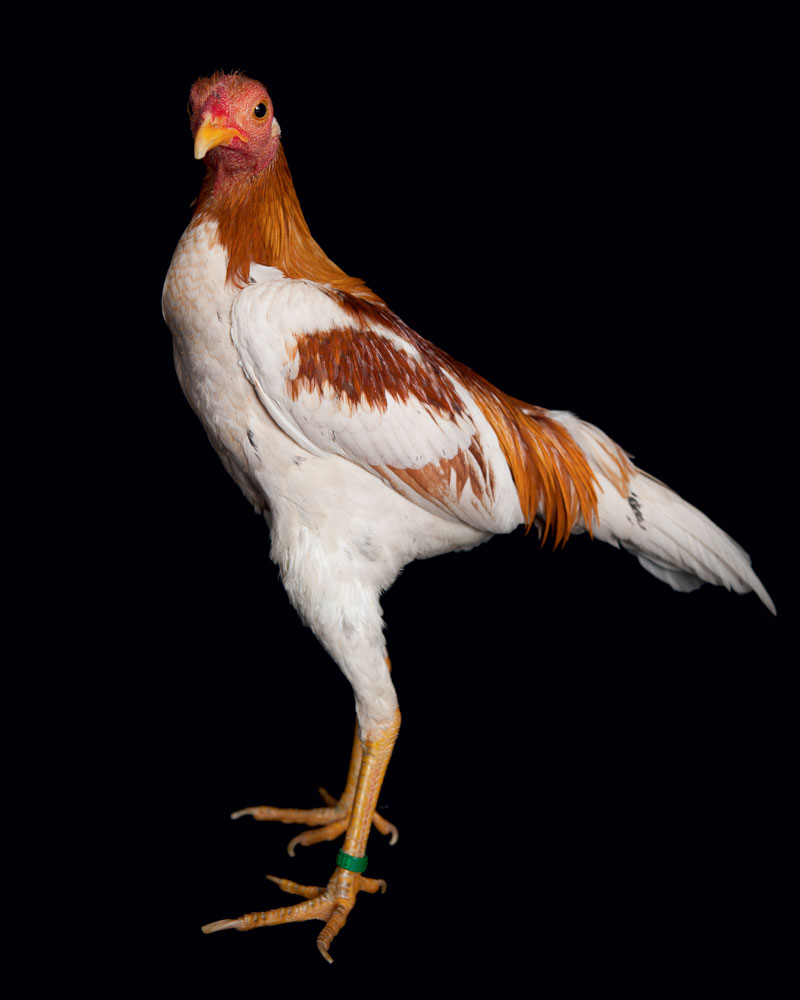
While exotic breeds such as the Cream Legbar can run $30 or more per chick, most cost around $3 each when purchased in straight runs (groups of mixed gender) and less than $5 each in groups sorted by sex. Obviously, it’s the ladies who lay eggs, and they don’t need a rooster to do so. In fact, many municipalities ban male birds and their endless crowing. But cocks do contribute something – crying out if predators threaten the hens.
Housing and feeding your birds
Your hatchlings will demand a special home, called a brooder, for six weeks (see “Bringing Up Babies,” below) before transitioning to a coop. There’s a wide variety of prefab coops on the market, at prices that start under $100 and go way up, though you can also build your own or retrofit an existing shed. The henhouse essentials include windows for ventilation, nesting boxes for egg-laying, and horizontal beams for roosting. (Roosting, or perching – an instinct passed down from the birds’ wild ancestors, who slept in trees for safety – allows chickens to air their tail feathers and snuggle up for warmth.) You’ll also want a screened outdoor run, whether attached to the henhouse or not, to indulge another instinctive behavior: dust-bathing, basically digging and rolling in dirt, which absorbs excess moisture from feathers and skin and repels fleas and lice. (See the key features of a chicken coop.)
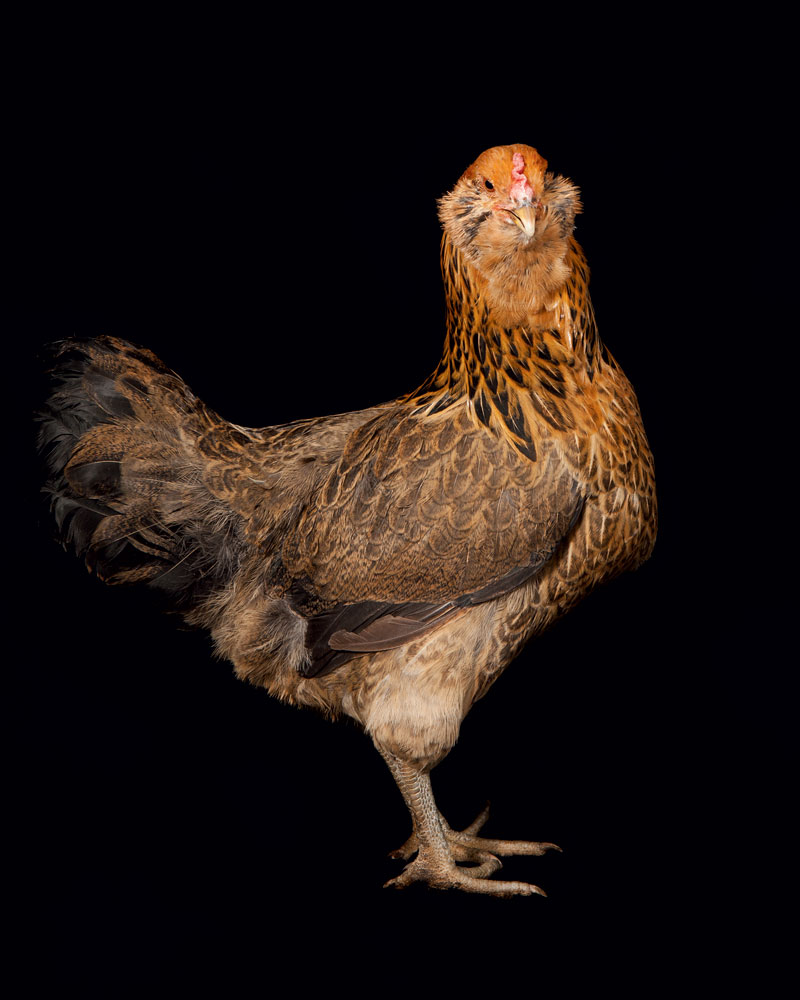
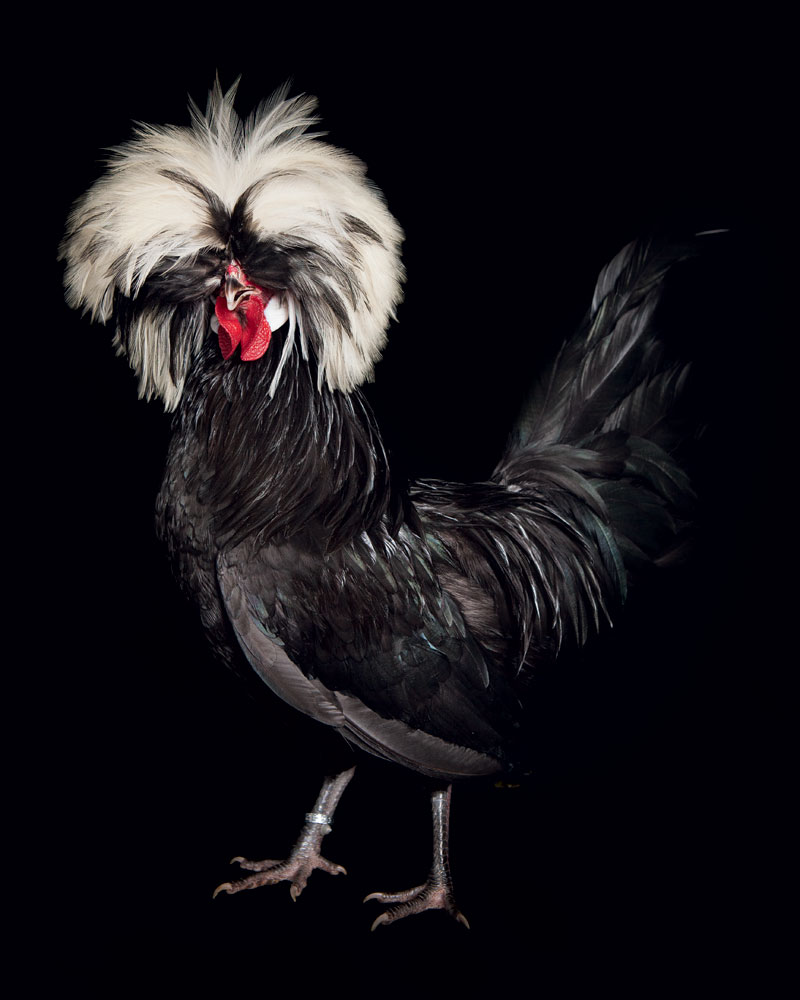
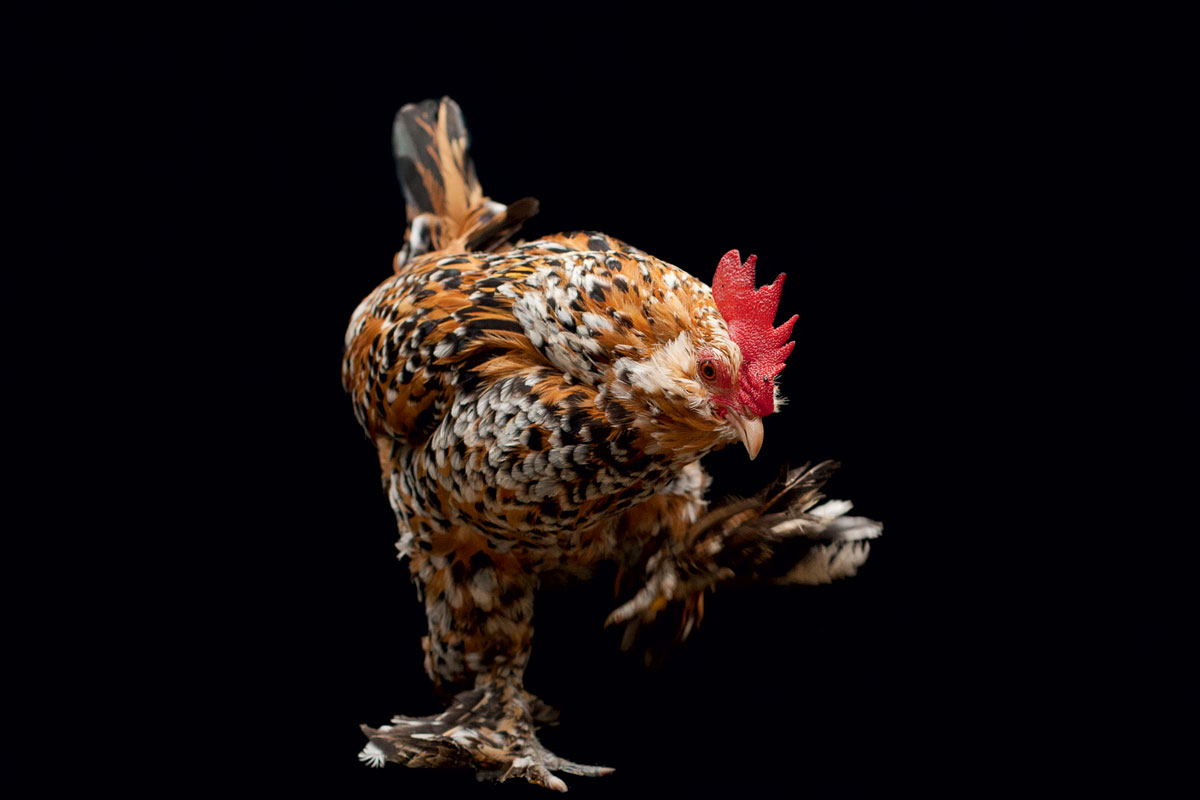
When the chickens move to their new home, at six weeks, it’s also time to change their diet, from starter feed (see “Bringing Up Babies,” below) to grower feed. The latter comes in crumbles (which chickens seem to prefer) and pellets (less messy and easier on humans). Kuhl makes a hanging feeder with a feed-saver grill that helps cut down on spillage ($65; flemingoutdoors.com). Because chickens don’t have teeth, they require insoluble stone grit to grind up food in their gizzards. Most commercial feeds include it, but you can also set out a bowl of the stuff, especially for birds on organic feed or those who spend their days foraging. Once the hens begin laying eggs, at around 21 weeks, switch to layer feed (in crumble or pellet form), which delivers extra calcium, phosphorous, and other nutrients; supply frequent foragers with a side of calcium-rich crushed oyster shells as well. Feel free to leave the food in the run, as chickens tend to self- regulate and rarely gorge. One exception: They’ll happily gobble up your leftovers; just limit such treats to less than 10 percent of their diet.
A much healthier way to supplement store-bought feed is through foraging. Let the birds out early in the morning, and they’ll hunt for bugs, seeds, and frogs until dusk. Be sure to rotate the flock around your pasture, shifting to a new grassy area after the omnivores denude the spot they’re on. You can use portable fences to create makeshift paddocks or, in places with busy roads or where predators are a threat, enlist a chicken tractor – essentially a chicken run on wheels.
Laying hens, which produce an egg almost every day, drink nearly twice as much water as roosters and non-laying hens – on average, half a liter a day. Make cool water available in the run during all waking hours. A waterer with a lip, hung from the run’s ceiling, ensures things stay clean (3-gallon waterer, $30; mypetchicken.com). When temperatures dip below 32°F, move the waterer and feeder inside the henhouse, and set the waterer atop a poultry water heater ($43; mypetchicken.com), elevated off the floor with a cinderblock. To keep your birds warm, stack insulating hay bales around the outside of the henhouse (not inside, where they’ll trap moisture and encourage mold). While heat lamps may be tempting, they can lead to coop fires. Artificial heat-ing also prevents the birds’ bodies from gradually adjusting to colder temperatures, meaning a loss of power could kill them.

Handling health issues
Because chickens have fast metabolisms and high body temperatures, any sickness they contract will progress quickly. If you notice listlessness, coughing, sneezing, standoffishness, or other unusual behavior, isolate the hen in question and stir a powdered vitamin-electrolyte product into her water, refreshing it twice a day. You can seek advice from your county agricultural agent, local extension office, or, if the chicken’s health seems to decline rapidly, a qualified farm vet. Also, keep an eye out for similar signs among the rest of the brood.
Don’t be alarmed, however, if your chickens start to look bedraggled near the end of summer. The shortening days signal that it’s time to molt, and the birds begin shedding old feathers and growing new ones for insulation. Laying will wane and may stop altogether, as the birds direct their energy and nutrients toward the new growth. Lastly, a note about broody hens: Occasionally, one will want to sit on a clutch of eggs until they hatch. Removing her from the eggs and moving her nesting box can help snap her out of the broodiness, though it may take weeks.
Reaping the benefits
The hard work of chicken-keeping pays off in the form of freshly laid eggs. Pasture-raised birds can lay eggs with a third less cholesterol, a quarter less saturated fat, and two-thirds more vitamin A than typical commercially produced eggs. Plus, homegrown ones can be stored, unrefrigerated, for several weeks, as long as they’re unwashed and unfertilized. (If there’s a rooster about, refrigerate the eggs within 36 hours.) Before consuming an egg, wash it under hot water to remove the protective cuticle; the water must be significantly warmer than the egg because of the porous nature of shells. In the six years since my husband returned from the feed store with those five fateful chicks, our operation has grown to include partner farms and some 20,000 birds. While my role these days is mostly limited to washing eggs, I know the answer to that age-old question: The chicken always comes first.
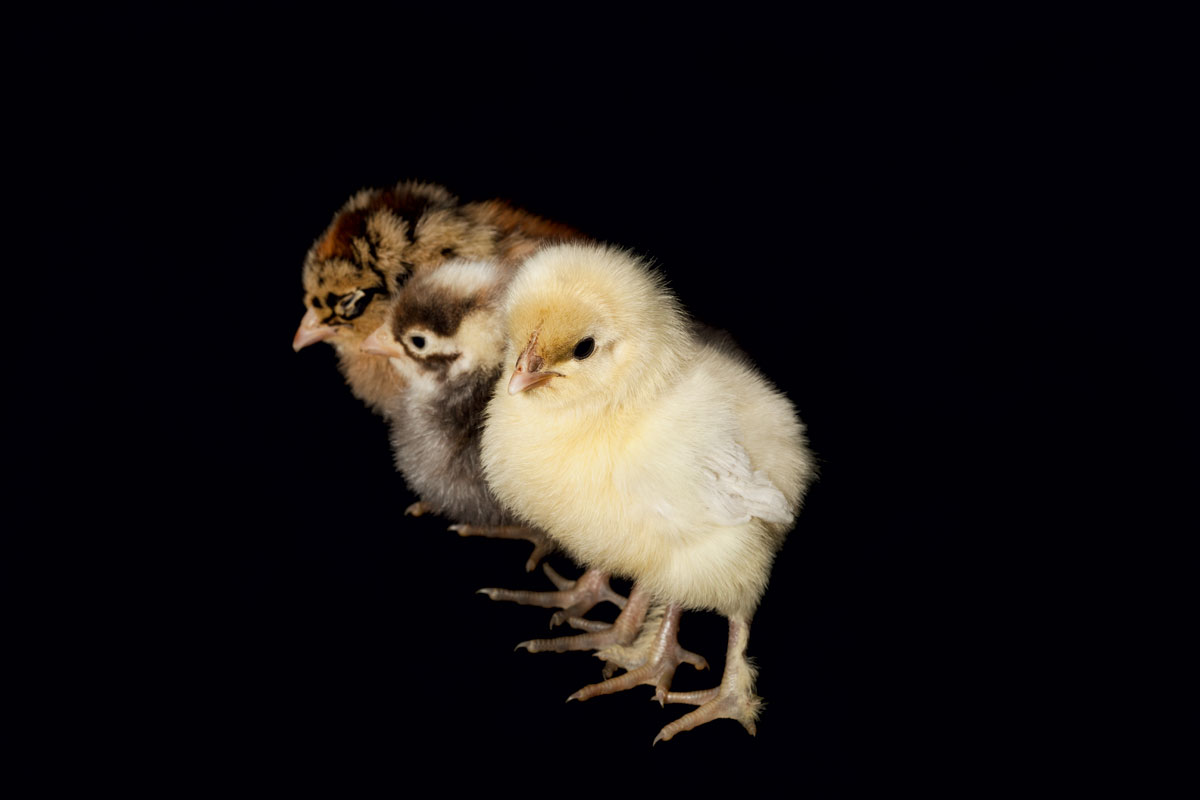
Bringing up babies
Whether your chicks come from the local feed store or an online hatchery, the newbies will need special treatment for six weeks – namely, a warm place free from predators and a diet geared to their tiny bodies.
Build a brooder
You can buy a brooder kit outfitted with a heat lamp and feeder for around $85 online, or simply repurpose a cardboard box or kiddie pool to house your chicks. The container should provide at least half a square foot of floor space per chick. Spread a 2- to 3-inch layer of pine shavings across the bottom of the brooder and cover the top with ½-inch metal mesh to keep growing birds from flapping out.
LEARN MORE
How to build a brooder.
Heat things up
Hang a 250-watt infrared heat lamp on an adjustable chain about 18 inches above one side of the brooder and set a thermometer inside. You’ll want the temperature at 95°F the first week. Raise the bulb a bit each week to decrease the temperature by five degrees, reaching 70°F by week six.
Feed your flock
Commercially formulated starter feed comes in mash or crumble form (pellets are tough for little birds to eat), often medicated to combat the potentially fatal disease coccidiosis. If your babies have already been vaccinated for coccidiosis, choose unmedicated feed to avoid rendering the vaccine null. Serve the food, and especially water, in specialized chick containers, as tiny birds can drown in a bowl of water.
Follow us

This work is licensed under a Creative Commons Attribution-NoDerivatives 4.0 International License.
Want to republish a Modern Farmer story?
We are happy for Modern Farmer stories to be shared, and encourage you to republish our articles for your audience. When doing so, we ask that you follow these guidelines:
Please credit us and our writers
For the author byline, please use “Author Name, Modern Farmer.” At the top of our stories, if on the web, please include this text and link: “This story was originally published by Modern Farmer.”
Please make sure to include a link back to either our home page or the article URL.
At the bottom of the story, please include the following text:
“Modern Farmer is a nonprofit initiative dedicated to raising awareness and catalyzing action at the intersection of food, agriculture, and society. Read more at <link>Modern Farmer</link>.”
Use our widget
We’d like to be able to track our stories, so we ask that if you republish our content, you do so using our widget (located on the left hand side of the article). The HTML code has a built-in tracker that tells us the data and domain where the story was published, as well as view counts.
Check the image requirements
It’s your responsibility to confirm you're licensed to republish images in our articles. Some images, such as those from commercial providers, don't allow their images to be republished without permission or payment. Copyright terms are generally listed in the image caption and attribution. You are welcome to omit our images or substitute with your own. Charts and interactive graphics follow the same rules.
Don’t change too much. Or, ask us first.
Articles must be republished in their entirety. It’s okay to change references to time (“today” to “yesterday”) or location (“Iowa City, IA” to “here”). But please keep everything else the same.
If you feel strongly that a more material edit needs to be made, get in touch with us at [email protected]. We’re happy to discuss it with the original author, but we must have prior approval for changes before publication.
Special cases
Extracts. You may run the first few lines or paragraphs of the article and then say: “Read the full article at Modern Farmer” with a link back to the original article.
Quotes. You may quote authors provided you include a link back to the article URL.
Translations. These require writer approval. To inquire about translation of a Modern Farmer article, contact us at [email protected]
Signed consent / copyright release forms. These are not required, provided you are following these guidelines.
Print. Articles can be republished in print under these same rules, with the exception that you do not need to include the links.
Tag us
When sharing the story on social media, please tag us using the following: - Twitter (@ModFarm) - Facebook (@ModernFarmerMedia) - Instagram (@modfarm)
Use our content respectfully
Modern Farmer is a nonprofit and as such we share our content for free and in good faith in order to reach new audiences. Respectfully,
No selling ads against our stories. It’s okay to put our stories on pages with ads.
Don’t republish our material wholesale, or automatically; you need to select stories to be republished individually.
You have no rights to sell, license, syndicate, or otherwise represent yourself as the authorized owner of our material to any third parties. This means that you cannot actively publish or submit our work for syndication to third party platforms or apps like Apple News or Google News. We understand that publishers cannot fully control when certain third parties automatically summarize or crawl content from publishers’ own sites.
Keep in touch
We want to hear from you if you love Modern Farmer content, have a collaboration idea, or anything else to share. As a nonprofit outlet, we work in service of our community and are always open to comments, feedback, and ideas. Contact us at [email protected].by Lucie B. Amundsen, Modern Farmer
March 15, 2016
Modern Farmer Weekly
Solutions Hub
Innovations, ideas and inspiration. Actionable solutions for a resilient food system.
ExploreExplore other topics
Share With Us
We want to hear from Modern Farmer readers who have thoughtful commentary, actionable solutions, or helpful ideas to share.
SubmitNecessary cookies are absolutely essential for the website to function properly. This category only includes cookies that ensures basic functionalities and security features of the website. These cookies do not store any personal information.
Any cookies that may not be particularly necessary for the website to function and are used specifically to collect user personal data via analytics, ads, other embedded contents are termed as non-necessary cookies.
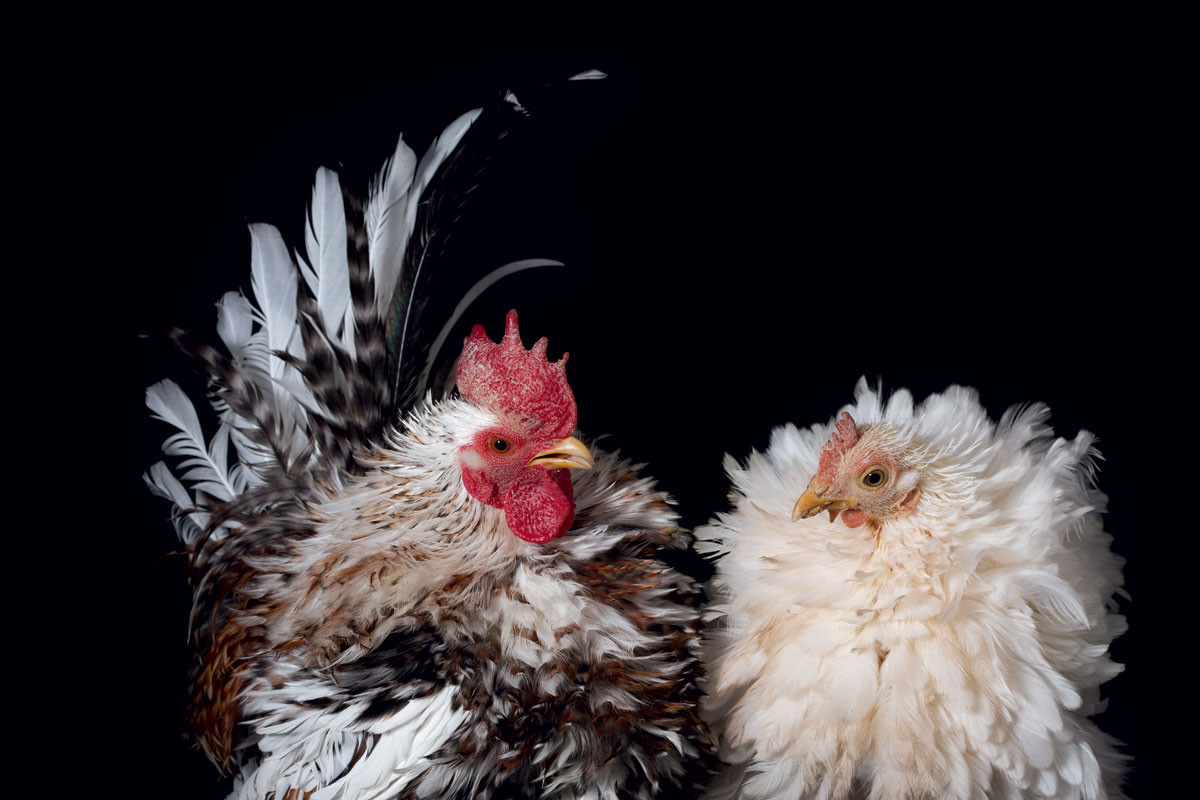
I have White Leghorn’s, the hens once accustom to you aren’t as skittish as the Rooster’s. I have Hen’s that try to roost on my arm while filling their feeders. The Rooster’s crow through out the day or when startled but the Hens don’t make much noise at all. I usually only hear a Hen when she’s laying in one of the Nesting box’s making some squawking sounds. Some of the information out in internet land isn’t so correct such as housing. Some claim you need 4 sqf per chicken in the coop but I have found if you raise… Read more »
Interested in egg producing chickens and raised gardens.
Lucie, why do the eggs need to be refrigerated within 36 hours of there is a rooster in the flock? Is it to make sure the embryo does not develop and they can be eaten?
I’m New here and I want to start farming chicken
Farming was destroyed by the inbred/hybrid takeover of the planet. They are genetically insane. The food should be broad spectrum nutrient and was destroyed by this no intelligence practice of all you can eat AIDS sewage caging of animals. They cannot even clean vitamin d synthesis up to aid in the killing of their incredible damages on this planet. No f**king thing on this earth needed all you can slaughter, and the restaurants could have been reservation pre order or six main meat entree items at most to reduce the insanity. The beasts did polar opposite, and they destroyed the… Read more »